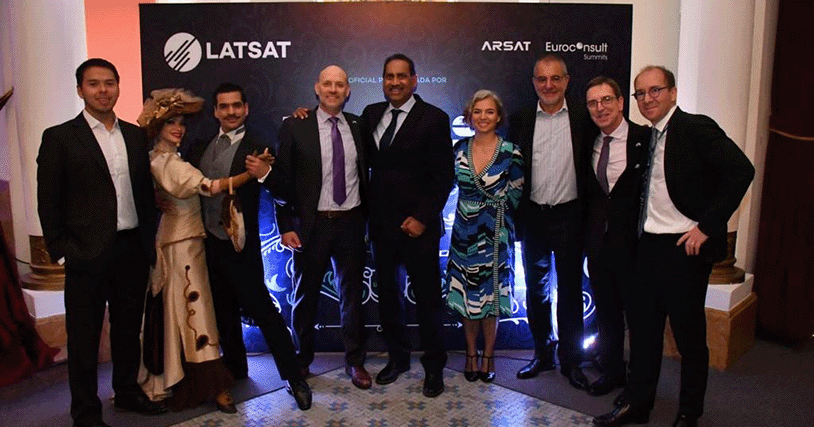At LATSAT, Leaders Discuss Industry Changes and How to Meet Market Demand

According to Argentina's National Communications Entity (Enacom), there are three million households in the country without internet access, and 2.5 million with connections that have speeds below 10 megabits per second. Most of these households are in remote areas far from urban centers, where it is not possible to deploy fiber optic networks. This is just one example of the digital divide facing governments, operators and communities across Latin America. This year’s LATSAT event, organized by Euroconsult and held in Buenos Aires, drew hundreds of leaders from government and the space industry in Latin America. Hot topics among the larger than anticipated crowd included addressing the digital divide, changes in the satellite industry and how to meet market demand.
During a panel on “Leading FSS Operators in LATAM,” Daniel Losada, VP of International Sales and Marketing, explained that there is a consolidation process happening between the satellite and mobile industries, with satellites being launched that can extend mobile connectivity. One example is Hughes Fusion , which combines wireless communication technologies with geostationary (GEO) satellite technologies to ensure high-speed and low-latency internet.
"The satellite industry is making interesting investments in integrating new technologies that will result in benefits for end users," Losada said. He also highlighted the uniqueness of the Argentine market, which has its own satellite industry, and noted that collaborations like the one between Hughes and ARSAT [the Argentine satellite operator] are important steps for meeting market demands. The Argentine state-owned company's main objective is to connect the entire population.
In a Fireside Chat about the relationship between satellite companies and telcos, Ramesh Ramaswamy, Executive Vice President and GM International, explained that Hughes is a good example of how the satellite ecosystem is changing.
“Hughes heritage was building ground segments for satellite operators; then we morphed into owning our own GEO satellites. With the launch of our new JUPITER™ 3 satellite, we will own about a tenth of the capacity over the Americas. We are also vertically integrated and a provider for Low Earth Orbit (LEO) satellite services, like those from the OneWeb constellation,” he said.
“Across the board, we provide services to multiple carriers and are probably the only satellite company that has a joint venture with an MNO, where we own 65% of Airtel in India. Telcos put satellite on the map. As Telcos evolved into Celcos, different operating models like this emerged.”
The Argentinian government is also doing its part to connect people across the region. In January 2023, it launched a new program called "Mi Pueblo Conectado" (My Connected Town). This program is bringing satellite connectivity and digital resources to over 350 communities in Argentina with limited or no access. ARSAT will execute the project, which will impact 3.5 million people. The national government will also invest $1.1 billion in 2023 through the Secretariat of Public Innovation, to be allocated across a variety of initiatives, including providing public access points and very small aperture (VSAT) antennas to local communities.
These types of innovations, partnerships and investments are part of the reason Insight Partners forecast the South America small satellite market will grow from US$ 52.83 million in 2022 to US$ 101.47 million by 2028––marking significant growth to support millions more people getting connected across Latin America.